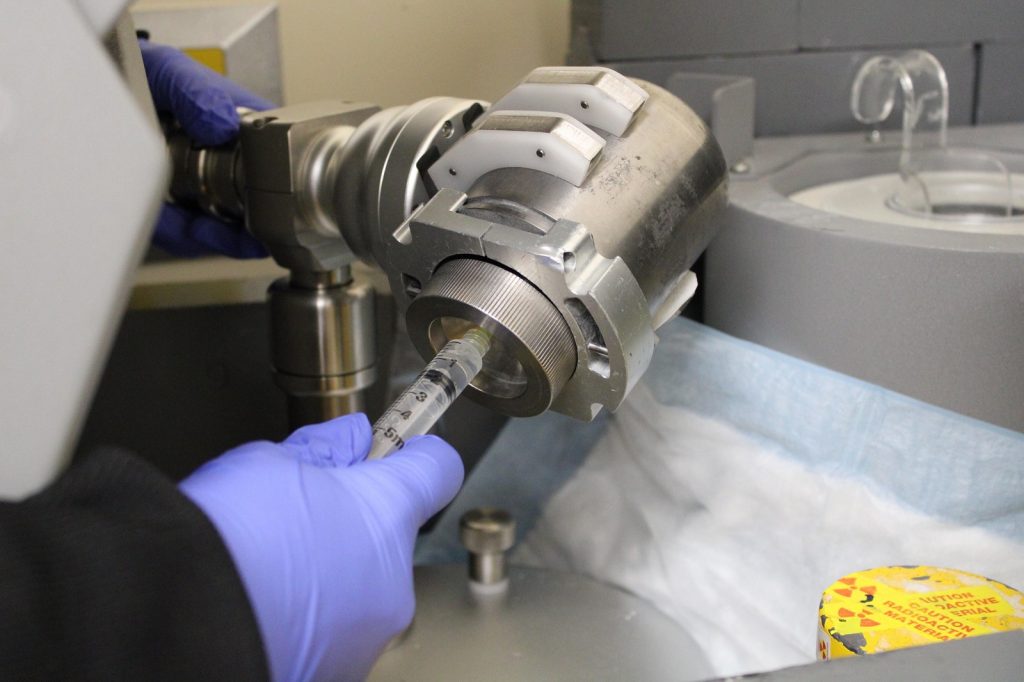Dose Drawing Station Helps Shield Staff from Radioactive PET Tracers
by Graham Strong
 A Medical Radiation Technologist from the TBRHSC demonstrates the new dose drawing station.
A Medical Radiation Technologist from the TBRHSC demonstrates the new dose drawing station.PET or positron emission tomography is a remarkable leap forward in diagnostics. The Thunder Bay Regional Health Sciences Centre received its first PET/CT scanner in 2008 – only the second hospital in Ontario to have one at the time. Back then, it was used to scan lung cancers.
But before the PET scanner, exploratory surgery was not uncommon to help treatment planning. In short, surgeons didn’t know if they had to operate on some patients until they did an exploratory operation. Not only was this operation traumatic and painful for the already-sick cancer patient, there was almost a 1 in 20 chance the patient wouldn’t survive the exploratory surgery itself.
So imagine the improvements in patient care when suddenly you could diagnose, stage, and treatment plan all with a simple PET scan! A radioactive tracer is added to a sugar solution called fluorodeoxyglucose or FDG 18F. Cancer cells uptake this sugar solution (and the radioactive tracer within it) faster than healthy cells. During a PET/CT scan, the radioactive particles light up the screen in real time, showing oncologists exactly where the cancer cells are, how big the tumours are, and what stage the cancer is at.
Small amounts of this radioactive tracer for one or even several scans over a longer amount of time is absolutely safe. However, repeated exposure, even of small doses, has a cumulative effect on the body.
But it wasn’t the patients who were at risk; it was the medical radiation technologists preparing the doses. Gripping the vial to fill the syringe exposes them to a small amount of radioactivity. As the number of ways PET could be used along with the number of patients being sent for PET scans increased, obviously so too did the number of doses they handled daily. It got to the point where the frequency of those small doses was starting to add up…
Thanks to your generous donations and Thunder Bay 50/50 Draw ticket purchases, you’re helping the Thunder Bay Regional Health Sciences Foundation make drawing radioactive doses for PET scans safer for the medical radiation technologists working at the Hospital.
“The dose drawing station helps shield the procedure to keep staff safer,” said Katherine Tuomi, Interim Manager of Diagnostic Imaging. “It’s kind of like if you can imagine a lead barrier between the technologists and the radioactive material. The technologists have much less exposure with the new equipment.”
The dose drawing station is a great example of these small-but-important pieces of equipment that help make healthcare better and safer for everyone – including staff.
You can help support projects like this by making a donation or buying Thunder Bay 50/50 Draw tickets. You can buy tickets online and find out what the Grand Prize is up to today here: www.healthsciencesfoundation.ca/5050